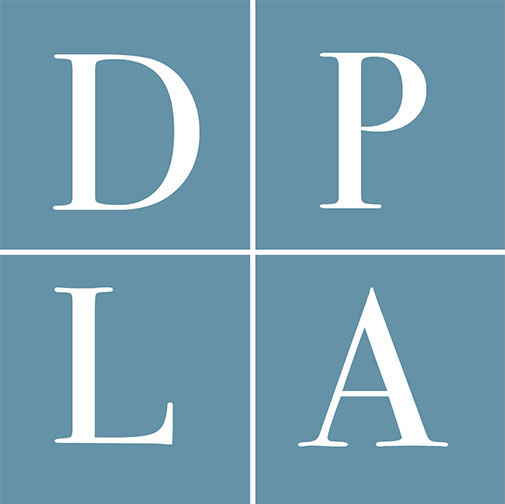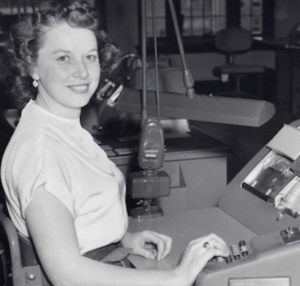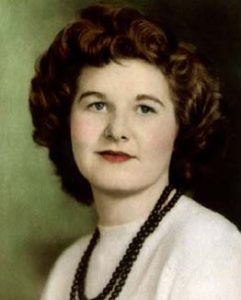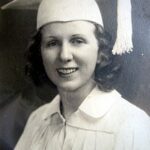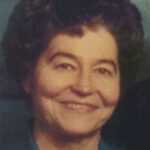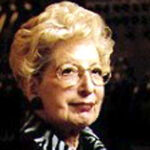Women in Computing
Introduction
Women have played an important role in both developing computer science's foundations as well as furthering its study. However, in recent times women's role in computing has been seemingly forgotten, and barriers to their participation in the subject have arose. These barriers include sexism within the study, boys being introduced to computers more and earlier than girls, a large body of male mentors within academia with significantly fewer female mentors, and a fallacy of not being as good as men with previous experience. In this archive I want to discuss present-day inhibitors to women in computer science as well as expose the significance of women in computing throughout its history through examples of famous female computer scientists as I believe it is important to appreciate the history of computer science as well understand the importance of these women's contributions to the study. The purpose of bringing these women to light is to both preserve their accomplishments as well as provide role models to young people in computer science.
This archive is a single page that has compiled biographies of famous women in computer science, enhanced by images from the DPLA to give a face to some of these great women in computing history. It is meant for those interested in the history of computer science as well as in the lack of diversity in computer science. The sources for barriers I included seemed accurate and apt for this archive so I used them. I chose to show these women because I thought they provided excellent examples of women's contribution to computer science and because I could find sources for them in the DPLA; the fact that I only have four sections for them indicates the lack of representation these women have. In addition, the sources at the bottom have more in-depth biographies/stories of these women as well as several good links to pages on the barriers to women in computing for the interested reader. Finally, almost all of the photos on this page are links to items in the DPLA; feel free to click them to find out more about their content, or hover to see their title.
Barriers
As stated above, a variety of factors play in to women's desire to leave computer science in college or to never join in the first place. Sexism within computer science departments or in the workplace discourages women to continue the study. It can occur both explicitly and implicitly, with examples being remarks such as "women aren't as technically proficient as males" or, as female graduate students and research staff in the Laboratory for Computer Science and the Artificial Intelligence Laboratory at MIT found, simply talking to male colleagues about computer science can be consider "being interested" in them which can harm their professionalism and limit women from fully reaching their potential.
Additionally, women in computer science departments sometimes feel "outdone" by male students who have more experience- even though they are not necessarily brighter. As Jane Mangolis et al called it, "Living Among the 'Programming Gods.'" Without strong role models, women begin to question if they can actually succeed in computer science or if it is right for them, as so many other students have more experience and are "better." To further push this, boys are often exposed to computers before girls, making the gap in experience even larger. Finally, to speak about the mentors, the multitude of male professors in comparison to female professors indicates a lack of role models; women don't necessarily see other women at the top of the field, which is a real problem- Stanford even has a whole page from a project on the lack of female CS faculty!
As an example of the lack of female professors in computing, these are the top results from the DPLA with the search "computer science faculty"
Grace Hopper

Department of Defense. American Forces Information Service. Defense Visual Information Center. 1994
Array
Department of Defense. American Forces Information Service. Defense Visual Information Center. 1994

Department of Defense. American Forces Information Service. Defense Visual Information Center. 1994
Array
Department of Defense. American Forces Information Service. Defense Visual Information Center. 1994
Grace Hopper earned her PhD in mathematics from Yale in 1934, a rare accomplishment at the time. She had been an instructor at Vassar College from 1928 until 1943 when she left her post as associate professor to join the Naval Reserve. She was assigned to the Bureau of Ordnance Computation Project at Harvard, working with the Mark series of computers. She was the third person to program the Mark I and was given the Naval Ordnance Development Award for her success with programming the Mark I, II, and III computers.
Hopper saw how computation could be extended to many people if the tools were available. To follow this dream of expanding who can program, she joined the Eckert-Mauchly Computer Corporation and began work on UNIVAC I. While at this project she (now an Admiral) tried to get fellow programmers to become more efficient by sharing code. She then developed the first compiler, the A-O, which turned mathematical symbols into machine code and had the computer do the difficult work without explicit instruction. This was a big step towards the user friendly tools, or programming languages.
Following the first compiler came FLOW-MATIC, a compiler for business tools such as billing. FLOW-MATIC lended much of its design to the famous COBOL language, which she developed manuals and tools for. She also helped design programs for validating the correctness of COBOL compilers. Program correctness is today one of the most important features of software design: you'd rather know your airplane is going to have its software die midflight before it goes up when you can still fix mistakes than when it is over the Atlantic. As part of her lasting legacy she has an award within the ACM given annually to an individual for a single large technical contribution named the ACM Grace Murray Hopper Award.
Hopper gave many speeches and loved to use analogies to help others understand; one of these is her famous nanosecond analogy:
And a couple of her nanoseconds as well as her badge from her time at Harvard and a Navy Specialist patch of hers:
The ENIAC and Maryln Meltzer, Ruth Teitelbaum, Frances Spence, Kathleen Antonelli, Jean Bartik, and Betty Holberton
Ida Rhodes
Rhodes was a mathematician who earned both a BS and MS from Cornell in 1923. She joined the Mathematical Tables Project in 1940, which calculated values of various functions and then published them as (very large) tables. Rhodes was a supervisor and planner of the Handbook of Mathematical Functions during this time. In 1947 she moved to the National Bureau of Standards to work on developing the electronic computer. Rhodes worked in the Machine Development Lab and later moved into consulting for the National Applied Mathematics Laboratories.
During this time she also pioneered systems of programming analysis, designing the C-10 language for the UNIVAC I as well as writing the original program used by the Social Security Administration. In 1949 she was given the Exceptional Service Gold Medal for "significant pioneering leadership and outstanding contributions to the scientific progress of the nation in the functional design and application of electronic digital computing equipment." Although retiring from the NBS in 1964 she remained a consultant until 1971.
In addition to her many technological achievements, Rhodes was also known for helping government and private agencies understand how computing could make their lives easier and their work faster. She also taught coding classes for the handicapped and lectured in general about computers and computing.
Jean Sammet
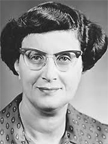 Source: http://history.computer.org/pioneers/sammet.html
Source: http://history.computer.org/pioneers/sammet.html
Jean Sammet received her MA in mathematics from the University of Illinois in 1949. From 1955-1958 she organized the first programming group for the Sperry Gyroscope Company, and from 1958-1961 she was the head programmer as well as a programming research consultant for Sylvania Electric Products. In 1961 she left to join IBM to manage the Data Systems Division in the Boston Programming center, and there initiated and developed FORMAC, a language for manipulating algebraic expressions with symbols. For this she won an IBM Outstanding Contribution Award in 1965.
In 1965 Sammet became the programming language technology manager at the Data Systems Division and wrote the book Programming Languages: History and Fundamentals which was published in 1969 and has become one of the classic computer science texts. In the years 1968-1978 she held several positions at IBM, including being a lecturer on programming languages. In 1978 she became the project manager for Ada at Federal Systems Division at IBM, designing both the usage and a standardization for the language. In 1979 she became software manager for the division and in 1983 returned to her previous post, continuing the work of standardizing Ada.
Besides her involvement at IBM Sammet was also heavily involved in the Association for Computing Machinery (ACM). She created and was the head of the Special Interest Committee on Symbolic and Algebraic Manipulation from 1965-1968, From 1968-1970 she was the chairman of the Committee on Special Interest Groups and Committees, and in 1971 was the chairman of the ACM Special Interest Group on Programming Languages. In 1972-1974 she was the vice president of the ACM itself and from 1974-1976 was the president!
In addition to these, Sammet was the chairman of the Statement Language Task Group and the Editing Committee on the team that first developed COBOL in 1959 in addition to being part of many other programming language teams from the 1960s-1980s. Finally, Sammet had published over 50 papers on programming languages, symbolic manipulation, and numerical computation by the time she died in 2017.
First Draft of the COBOL Language; Sound Recording of the UNIVAC Conference of 1990.
Sources
“About ACM Grace Murray Hopper Award.” ACM Grace Murray Hopper Award, ACM, awards.acm.org/hopper.
Agrawal, Ruchika, et al. The Shortage Of Female Computer Science Faculty At Stanford University, Stanford University, cs.stanford.edu/people/eroberts/courses/cs181/projects/women-faculty/index.html.
“Barriers to Equality in Academia: Women in Computer Science at MIT.” Barriers to Equality in Academia: Women in Computer Science at MIT, Prepared by female graduate students and research staff in the Laboratory for Computer Science and the Artificial Intelligence Laboratory at MIT, homes.cs.washington.edu/~lazowska/mit/.
da Cruz, Frank. “Programming the ENIAC.” Columbia University Computing History, Columbia University Computing History, 24 Apr. 2017, www.columbia.edu/cu/computinghistory/eniac.html.
Fisher, Lawrence M. “In Memoriam: Jean E. Sammet 1928-2017.” ACM, Communications of the ACM, 23 May 2017, cacm.acm.org/news/217652-in-memoriam-jean-e-sammet-1928-2017/fulltext.
Grace Murray Hopper. Computer Science at Yale, www.cs.yale.edu/homes/tap/Files/hopper-story.html.
Lee, J. A. N. “Ida Rhodes (Hadassah Itzkowitz).” Computer Pioneers, IEEE Computer Society, history.computer.org/pioneers/rhodes.html.
Lee, J A. N. “Jean E. Sammet.” Computer Pioneers, IEEE Computer Society, history.computer.org/pioneers/sammet.html.
Margolis, Jane, et al. The Anatomy of Interest: Women in Undergraduate Computer Science. www.cs.cmu.edu/afs/cs/project/gendergap/www/papers/anatomyWSQ99.pdf.
Roberts, Eric S. “Women face unique barriers to academic success in computer science.” Stanford University News Service, Stanford University, web.stanford.edu/dept/news/pr/95/950307Arc5335.html.
A big thanks to the DPLA whose images and items greatly improved this archive
―This archival exhibit was created by Benjamin Quiring in Literature and Digital Diversity, fall 2017.
